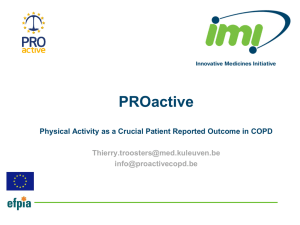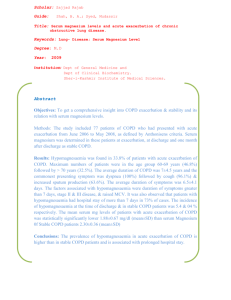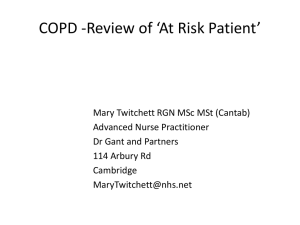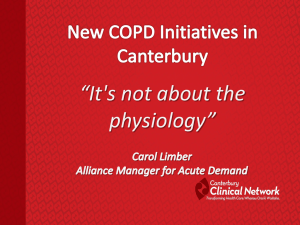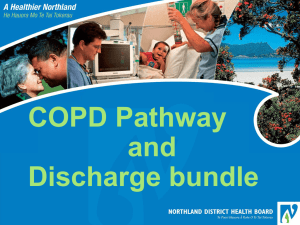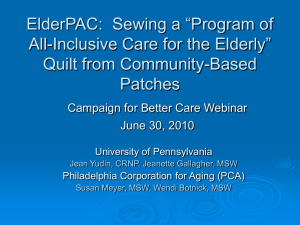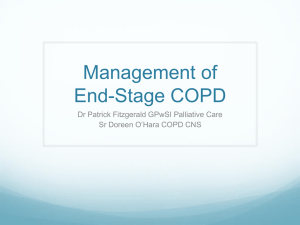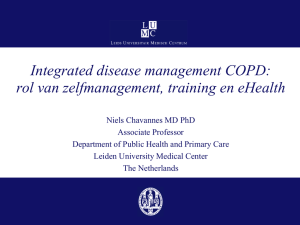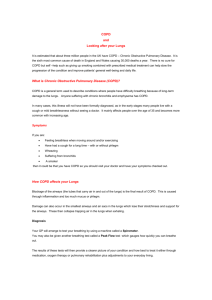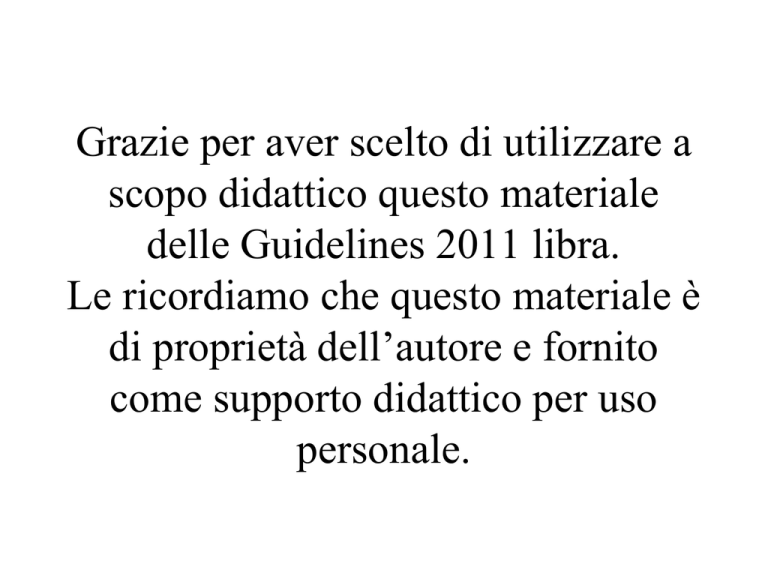
Grazie per aver scelto di utilizzare a
scopo didattico questo materiale
delle Guidelines 2011 libra.
Le ricordiamo che questo materiale è
di proprietà dell’autore e fornito
come supporto didattico per uso
personale.
Role of industrial research in the development of
new drugs
Malcolm Johnson
GlaxoSmithKline R&D
& NHLI,London
Key issues in formulating an hypothesis in
drug discovery
Biology
Scientific understanding of disease state?
What is the desirable mechanism?
Medical Need
Medicine
Is mechanism acceptable in man?
Can it be tested in man?
Chemistry
What to make?
Discovery/Development Strategies
• In house research
• In-licencing
• External collaborations
• Collaborative networks
• Promote external innovation
Drug discovery pipeline
Exploratory discovery
Disease
selection
Target
identification
and selection
Drug discovery
Lead
identification
Lead
optimization
Candidate
pre-clinical
evaluation
Clinical
proof of
concept
Drug discovery pipeline
Exploratory discovery
Disease
selection
Target
identification
Drug discovery
Lead
Lead
identification
optimization
Candidate
Clinical
pre-clinical
proof of
evaluation
concept
and selection
Normal
Tissue bioassay
Disease
Normal
Primary
Disease
Integrative
pharmacology
Isolated cells
Transfection
Immunohistochemistry
Gene microarray
Transgenic models
Receptors
Enzymes
Reporter genes
Drug discovery/development pipeline
Drug development
Drug discovery
Disease
selection
Gene to
Function
Target
function to target
to hit
Hit to
lead
Lead
optimisation
Safety
and
Phase I
Phase II
developability
Commit
Commit
to
to
to
disease
product
target
type
Commit Tractable
hit
Candidate
First time
Proof of
selection
in man
concept
Phase III
Phase IV
Research/development strategy
Therapeutic objective
Biology
Clinical
Project team
Chemistry
Information
Drug candidate
Exploratory development
Full development
Clinical trials
Regulatory authorities
Product licence application
Market
science
How are drugs discovered?
Random screening
• Chemistry/compound library
• Natural products
Rational design
• Based on natural hormones
• Based on existing active drugs
• Based on molecular modelling
Pre-clinical studies
•
Purpose
- Determine bilogical activity
- Assess specificity of action
•
Types of studies
- In vitro studies
- In vivo (animal studies)
•
Study design
- Dose-response studies
•
Success rate
- 1 in 1000 compounds tested
•
Time
- Variable. Approximately 3.5 years
for successful lead compounds
High Throughput Screening
1980:Salmeterol project- 10 compounds/week
2011;100,000 compounds/day:
combinatorial chemistry
smart screens
cloned human receptors
96-well plate format
low volumes
robotics
Future: 10 million /hour:
lower costs
smaller volumes (pl)
• Molecular modelling
• Bioinformatics
• Proteomics
• Genetics
• Pharmacogenomics
Fluticasone furoate– an ‘enhanced-affinity’
glucocorticoid
FP
FF
Biggadike et al J Med Chem 2008
Vilanterol in receptor
Toxicology
• Acute
• Subacute
• Chronic
- 2-week studies in 3 or 4 species
maximum tolerated dose
- 6-month studies in 2 species
- 12-month studies in 2 species (rats & dogs)
- Oncogenicity studies
- 18 months in mice
• Fertility and
reproductive
- 2 years in rats
- Fertility, teratology and perinatal and
postnatal studies in 2 species
• Mutagenicity
(rats and rabbits)
- In vivo and in vitro tests
Phase I clinical trials
• Purpose
• Type of
studies
• Study
population
• Study design
• Success rate
• Time
Determine the primary safety profile
and a safe dosage range
Pharmacokinetic and pharmacodynamic
studies
Normal, healthy volunteers (usually male)
Single dose escalation or short-term
design multiple dose, placebo controlled,
in specialised hospital units
1 in 3
1 year
Phase III clinical trials
• Purpose
• Type of studies
• Study
population
• Study design
• Success rate
• Time
Verify effectiveness, closely monitor
safety in long-term use, establish optimum
dosage
Placebo, dose or comparator controlled
efficacy and safety
1000 to 3000 patients, more heterogeneous
to reflect real patient population
Multiple end-point, double-blind, large
multi-centre
1 in 3
2 to 4 years
New drug development process
12-15 years total
2.5 years
Approval
Regulatory review
Marketing application filed with
regulatory authority
3+ years
2+ years
1 + year
Phase III clinical studies –
extensive clinical studies
Phase II clinical studies – efficacy studies
Phase I clinical studies – pharmacological profile
Regulatory/ethical review committee approval
3+ years
Preclinical laboratory and animal toxicology studies
IRD
NDA
Manufacture
Clinical trials
Process research
Volunteer studies
Toxicology
Patenting
Testing
Screening
New drug development:
A major high-risk undertaking
Time
12-15 years from discovery to market
Cost
£900 million
Success
1 in 4000 compounds synthesised or 1 in 5
tested in humans reaches the market
Return
1 in 3 drugs reaching the market recaptures
development costs
Mortality Studies
COPD:
TORCH 6,100 patients studied for 3 years
( Cost 450,000,000 euros; Mortality p=0.052)
UPLIFT 6,400 patients studied for 4 years
(Cost ?; Mortality p=0.086)
External collaborations network
Academic
Academic
Academic
centre
centre
Pharma
Clinical
R&D
centre
centre
Academic
Academic
centre
centre
External collaborations objectives:
– Increased product database
efficacy/safety support
– Extend product profile
new claims?
– Address competitor claims/issues
– Increase number/value of citable publications
External Research Collaborations
Non-project related:
Muscarinic receptor mapping in the airways of COPD patients
Role of innate immunity in lung repair in COPD
Project related:
Effects of Relovair on parasternal muscle and diaphragm in
patients with COPD
Functional enhancement of corticosteroid action by LABAs
GR nuclear translocation
Non treatment
FP (10-10M)
FF (10-10M)
4 hr
30 hr
Ito et al, NHLI
p38-alpha kinase inhibitor (LosmapimodGW 856553) enhances steroid mediated suppression
of IL-8 release in COPD
553-9
553-10
20
*
40
Dex
**
60
80
**
Dex/553-10M
Dex/553-9M
**
** p<0.01 compared
to Dex alone
100
L/
55
3
% IL-8 Suppression
compared with LPS alone
0
-9
-8
-7
-6
Dex [Log M]
Bhavsar et al, NHLI
MICA
• MRC Industrial Collaboration Award
Industry’s contribution can be:
Financial (FTEs) or “in kind”
Consumables
Equipment
Resources
Project Management
% Industrial contribution = industrial costs/total cost
Objectives of ECLIPSE
• To define clinically relevant COPD subtypes in
individuals with GOLD stage II–IV COPD
• To define the parameters that predict disease
progression over 3 years in the clinically relevant
COPD subtypes
• To acquire data on biomarkers that correlate with
clinically relevant COPD subtypes
• To identify novel genetic factors and/or
biomarkers that correlate with clinically relevant
COPD subtypes
SP-D and COPD: Increased SPD Levels Predict
Occurrence of At Least One Exacerbation
Risk (Odds Ratio) of exacerbation
for each 100ng/mL increase in SP-D*
95% CI
All patients
1.22
1.07 – 1.39
Upper quartile baseline
level only
1.42
1.02 – 1.97
Upper quartile baseline
level only, excluding
outliers with SP-D >99th
percentile (382.7ng/mL)
1.58
1.02 – 2.44
Patients no reporting
exacerbation in year prior
to enrolment
1.23
1.02 -1.49
* Serum SP-D continuous variable in multivariate model adjusting for sex, percentage predicted FEV1 ,
reversibility and those taking corticosteroids
Lomas DA, et al. Eur Respir J 2009;34:95-102
ECLIPSE/NETT
Genome-wide asssociation study identifies BICD1 as
a susceptibilty gene for emphysema.
• p=5.2x10-7 mild emphysema
• p=4.8x10-8 moderate/severe emphysema
Kong et al, AJRCCM,2011
IMI
Innovative Medicines Initiative:
Europe-wide public-private initiative aiming to
speed up the development of better and safer
medicines for patients.
Supports collaborative research projects and
builds networks of industrial and academic
experts in order to boost pharmaceutical
innovation in Europe.
CATALYST
GSK: Open Bioscience Innovation Campus
• INCUBATOR – Small start-up companies
• ACCELERATOR - Established companies with
possible leads



